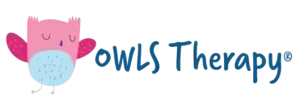In this multi-part blog series, I am going to cover the answers to questions I get asked consistently. These may be questions I get before a child begins speech therapy or they might be questions that I get once speech therapy has begun. Regardless, they are clearly questions that need to be answered!
1. How long is my child going to need to do this?
This is by far the question that I get asked the most. Let me start by saying that speech therapy is a process and thus is typically not a quick fix. When you think about what we are actually trying to do, it is much easier to understand why speech and language disorders do not typically clear up in a couple of months. For example, if you take a child who has articulation errors (substituting one sound for another sound within a word), this may be the easiest way to demonstrate this. Let’s take imaginary child, Peter. Peter’s parents contact me because Peter has been struggling to say his “R” sound correctly. “Rabbit” becomes “wabbit,” “ring” becames “wing,” and this occurs for every word with an “R.” Peter is now 8 and while it was adorable when he was 3, it’s not quite so adorable at the age of 8. Peter’s parents understand that he needs some professional help. He has received some speech therapy in the school system, but he was dismissed because it wasn’t impacting him academically. Thus, they are going the private speech therapy route. When Peter was seen in the school system, he was seen with a group of 5 other students, so they are hoping that having individual therapy will really speed things up! And while having an entire session that has been planned and organized solely for your child’s specific needs will help, it’s not quite that easy. This is where speech therapy becomes a process. Right now, when Peter goes to say an “R,” he has a motor plan in his brain that tells him to round his lips for the sound. This obviously results in a “W” which is not the correct sound. The goal of speech therapy is to override this old plan and replace it with a new, correct motor plan. The new motor plan would have Peter retract his tongue and spread it out wide in his mouth touching his upper molars. Currently, Peter’s old, incorrect motor plan is very strong. He has been using it for about 7 years and it is a well-traveled path. His new plan that he has learned in speech is very weak and is definitely not the “go to” motor plan. The goal of therapy is to strengthen this new motor plan to the point where the old, incorrect motor plan is ultimately eliminated when he produces the “R” sound and the new, correct motor plan is the dominant plan. As you can imagine, this takes time. It takes continual, consistent, copious practice. It takes a lot of hard work. It takes rewiring the brain. The average child is in speech therapy for about 2-3 years. Some are dismissed quicker; others stay in longer. It really is child-dependent based on what is going on with their speech and language system. As a result, can I ever give parents a definitive exit date? Sadly, I can’t. I would love to be able to but there are too many variables, both known and unknown, that will determine how long a child will need to attend speech therapy. However, what I can tell parents is that starting speech therapy is the best thing you can do for your child and progress will be made.
